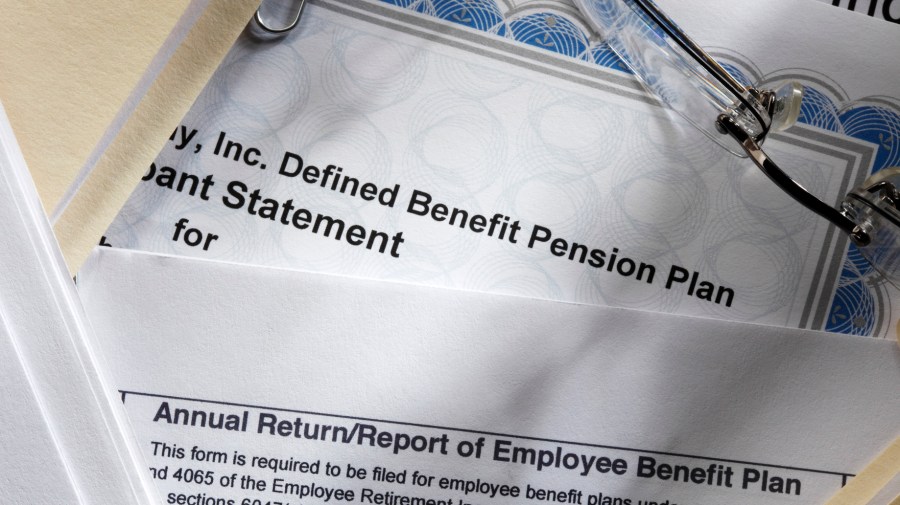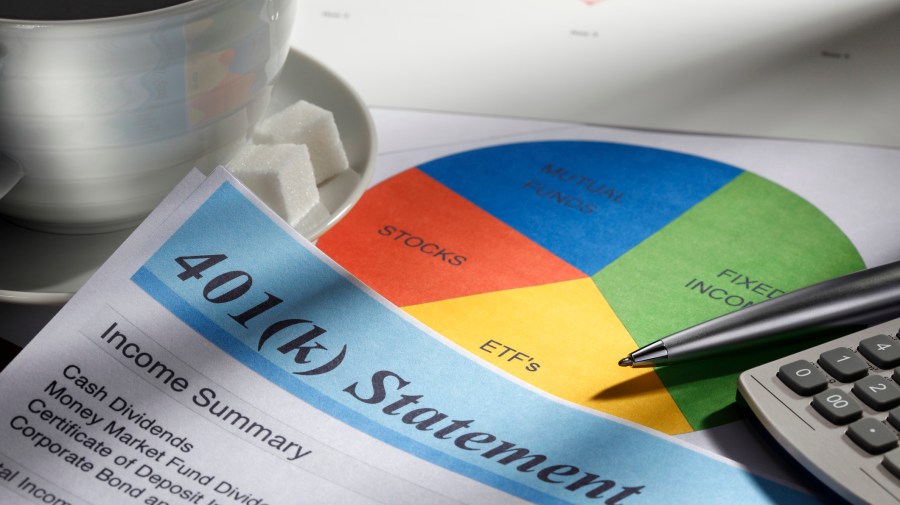An Introduction to Building Plans and Working Drawings and How to Read Them

Retirement is a glorious time of life most people expect forrard to with excitement, especially if they've planned well for those time to come aureate years by tucking away a prissy retirement fund to help them live comfortably. For nigh employees in the individual sector, that ways setting up a 401(k) or some other blazon of retirement account they can contribute part of their paycheck to each month. For those in the public sector, alimony plans that consist exclusively of employer contributions are much more than common.
Historically, pension plans first became popular in World War Two, and they have remained key benefit components for government employees and unionized workers since that time, although some private companies also have pension plans. Businesses who use them agree to pay their employees set benefit amounts throughout their retirement years. The exact amount you lot tin look to receive increases each year that you work for the company. To make the details fifty-fifty more disruptive, some plans have evolved to also include employee participation. Here's a quick look at how a alimony program works.
The specific details for alimony plans vary from organisation to organization, especially for individual sector companies who offer pension plans, but the general ideas are usually like. The employer makes investments in a pension fund and attempts to grow that fund each year to ensure funds are always bachelor to make monthly pension payments to employees who accept already retired. Both company and employee contributions to pension plans are taxation exempt until the funds are withdrawn.

The basic calculation for determining the corporeality of an annual pension usually includes adding a prepare pct for each year the employee worked for the company and multiplying the total percentage by the average salary of the employee for the final 5 years of service. Individual sector pension plans often fix the percentage at 1% per year, while government-based public pensions normally pay around 2% per year of service. That means an employee who worked for a visitor for twenty years at an average salary of $50,000 would have an annual pension of $10,000 at ane% per year or $xx,000 at ii% per year.
Types of Alimony Plans
Pension plans come in two unlike forms: defined benefit plans and divers contribution plans. A divers benefit program follows the traditional format that positions the pension purely as a do good to the employee with the total cost paid by the employer. Regardless of how the company'south alimony fund investment performs in the future, the employer commits to paying each employee a stock-still corporeality throughout their retirement. If the fund comes up brusk, the employer is obligated to pay the full corporeality of the alimony.

A defined contribution plan follows the model of a typical 401(chiliad) investment plan. Employees brand contributions themselves, and their employers besides brand contributions, normally based on matching some portion of the employee's investment. The future benefits paid to employees are dependent on the performance of the plan.
How Do Pension Plans and 401(k) Plans Differ?
A 401(k) is a blazon of defined contribution plan. It relies heavily on the contributions of individuals, although employers may contribute funds as well. Because 401(m) accounts are tax exempt until money is withdrawn, several legal rules govern withdrawals, only the employee has some say in overall account management.

Pension plans don't toll employees a dime and provide free money for the hereafter as a perk of years of service to the company, simply participants tin can't make any investment decisions and don't accept access to their accounts until retirement. Fund managers create a portfolio for their land pension entitlement under a divers contribution plan, diversify the funds into investments and so disburse them after retirement.
Choose a Lump Sum Payment or a Monthly Annuity
Pension plans usually offer recipients ii ways to receive their money in retirement: a 1-fourth dimension lump sum payment or a monthly payment called a monthly annuity. Employees as well accept to decide if they want a single-life pension that only pays funds to them until their death or a joint survivor pension that continues to pay the surviving spouse after their death. The downside to the latter is the total annual alimony amount paid is lower — ordinarily past most x% — and the spouse could laissez passer away earlier the retired employee.

Choosing a payment method depends on your individual needs. Some people adopt to withdraw the coin in a lump sum and identify information technology in a individual retirement business relationship they control, while others prefer the convenience of receiving reliable monthly payments. The lump-sum choice is likewise beneficial when employees desire to pay off all their debt and move into retirement with no monthly expenses beyond elementary living expenses.
Empathise the Vesting Schedule
Before employers hand over large amounts of money to quondam employees for retirement, they generally require the employees to come across sure qualifying criteria. The main way they restrict alimony participation is through a vesting schedule. Employees may go eligible for employer alimony contributions within a twelvemonth of employment, but those funds must be vested before employees can admission them in the future.

In rare cases, vesting occurs immediately afterward the contribution, and the funds are fully available as shortly every bit an employee retires, regardless of how long they worked for the company. Even so, in near cases, the vesting process usually takes several years of employment for an employee to reach a fully vested status that entitles them to the full amount of the funds when they retire. The purpose of this approach is to ensure but employees who devote a substantial amount of time to the company really receive a total alimony.
Source: https://www.askmoney.com/investing/understanding-your-pension-plan?utm_content=params%3Ao%3D1465803%26ad%3DdirN%26qo%3DserpIndex
0 Response to "An Introduction to Building Plans and Working Drawings and How to Read Them"
Publicar un comentario